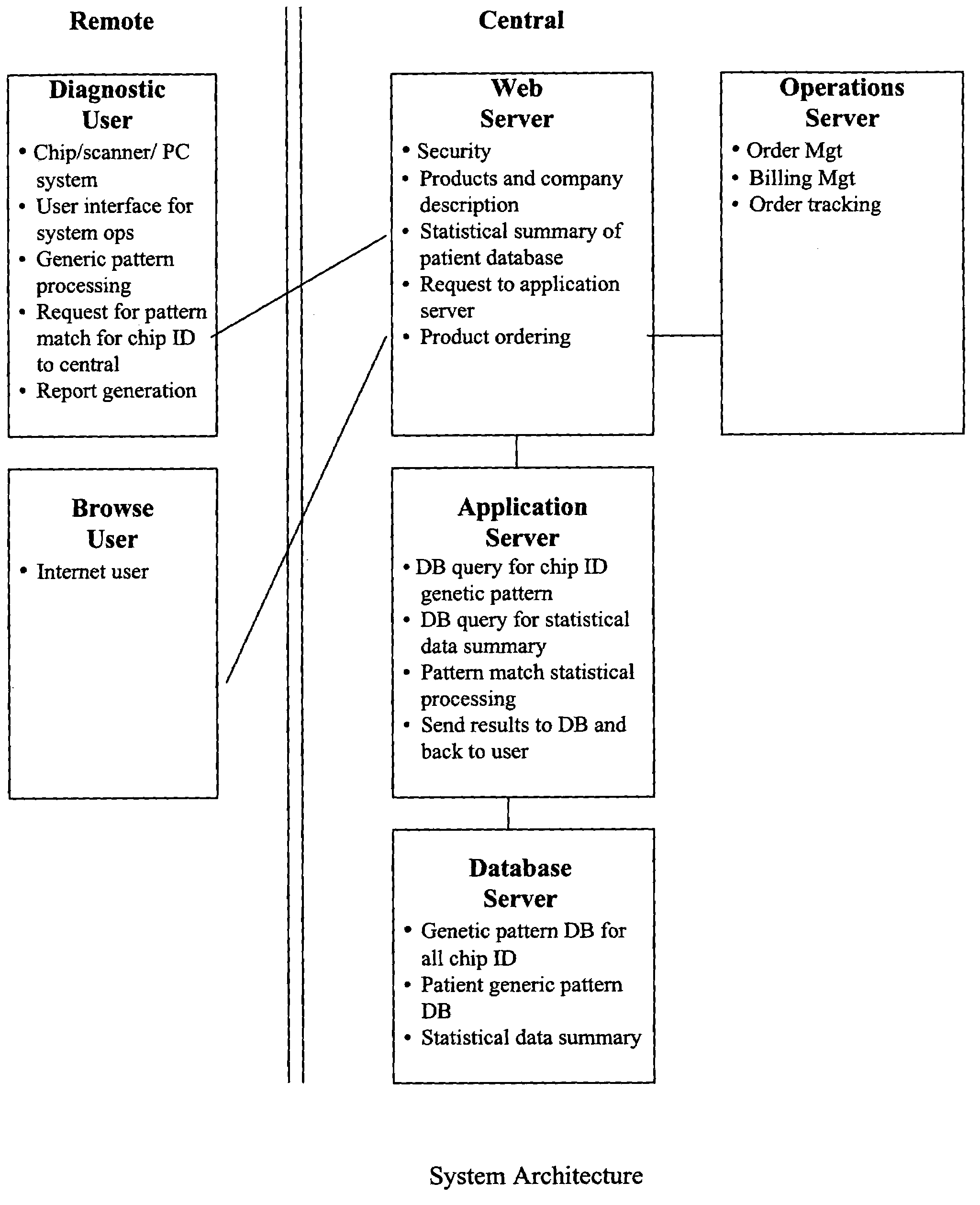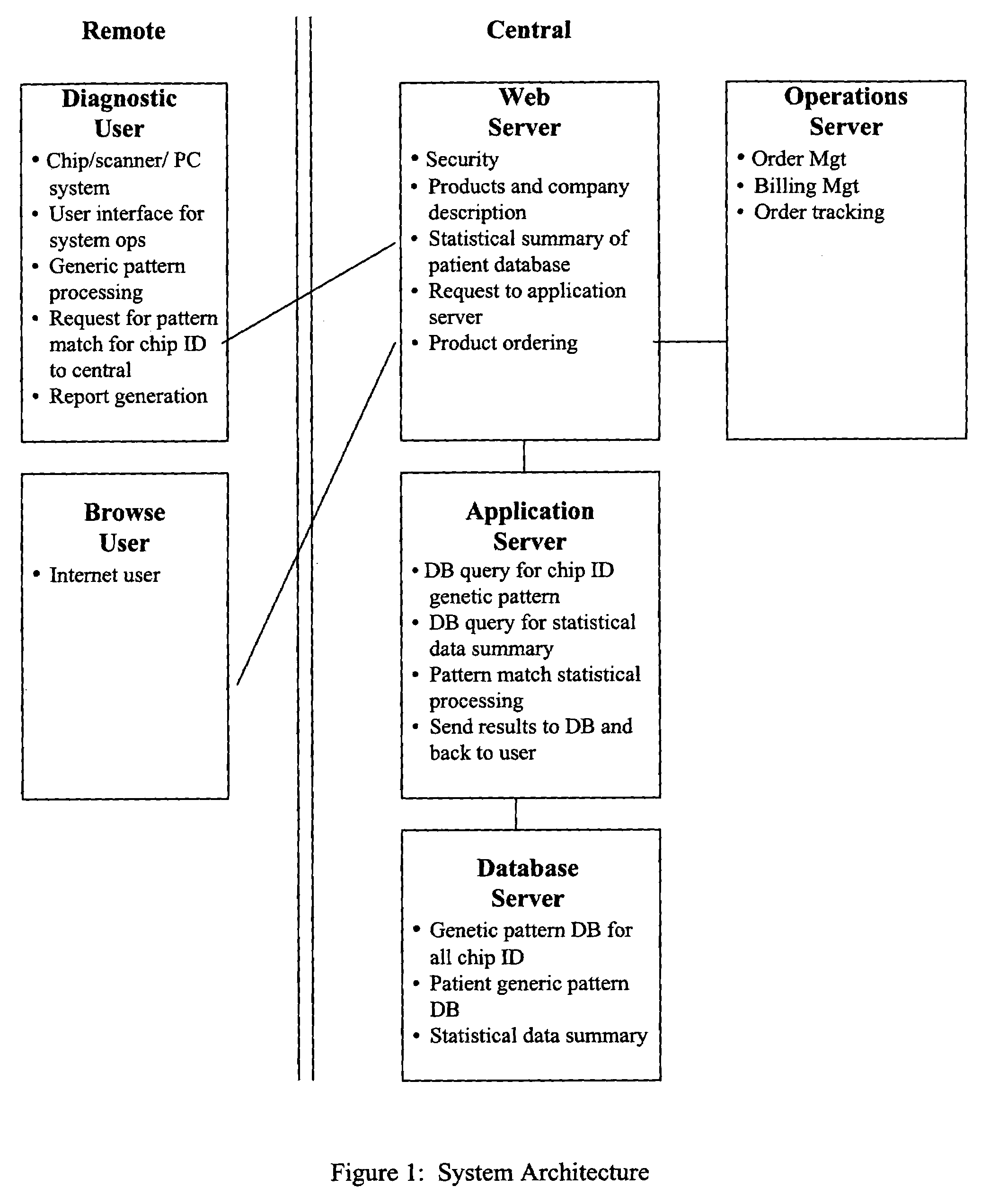Artificial intelligence system for genetic analysis
- Summary
- Abstract
- Description
- Claims
- Application Information
AI Technical Summary
Benefits of technology
Problems solved by technology
Method used
Image
Examples
Embodiment Construction
a) DEFINITIONS AND GENERAL PARAMETERS
[0023]The following definitions are set forth to illustrate and define the meaning and scope of the various terms used to describe the invention herein.
[0024]A “polynucleotide”, “oligonucleotide”, or “nucleic acid” includes, but is not limited to, mRNA, cDNA, genomic DNA, and synthetic DNA and RNA sequences, comprising the natural nucleotide bases adenine, guanine, cytosine, thymine, and uracil. The terms also encompass sequences having one or more modified nucleotide(s). The terms “polynucleotide” and “oligonucleotide” are used interchangeably herein. No limitation as to length or to synthetic origin are suggested by the use of either of these terms herein.
[0025]A “probe” is a nucleic acid sequence, optionally tethered, affixed, or bound to a solid surface such as a microarray or chip.
[0026]A “target nucleic acid” is generally a free nucleic acid sample whose identity or / and abundance can be detected through the use of a DNA micro array.
[0027]Th...
PUM
 Login to View More
Login to View More Abstract
Description
Claims
Application Information
 Login to View More
Login to View More - R&D
- Intellectual Property
- Life Sciences
- Materials
- Tech Scout
- Unparalleled Data Quality
- Higher Quality Content
- 60% Fewer Hallucinations
Browse by: Latest US Patents, China's latest patents, Technical Efficacy Thesaurus, Application Domain, Technology Topic, Popular Technical Reports.
© 2025 PatSnap. All rights reserved.Legal|Privacy policy|Modern Slavery Act Transparency Statement|Sitemap|About US| Contact US: help@patsnap.com



